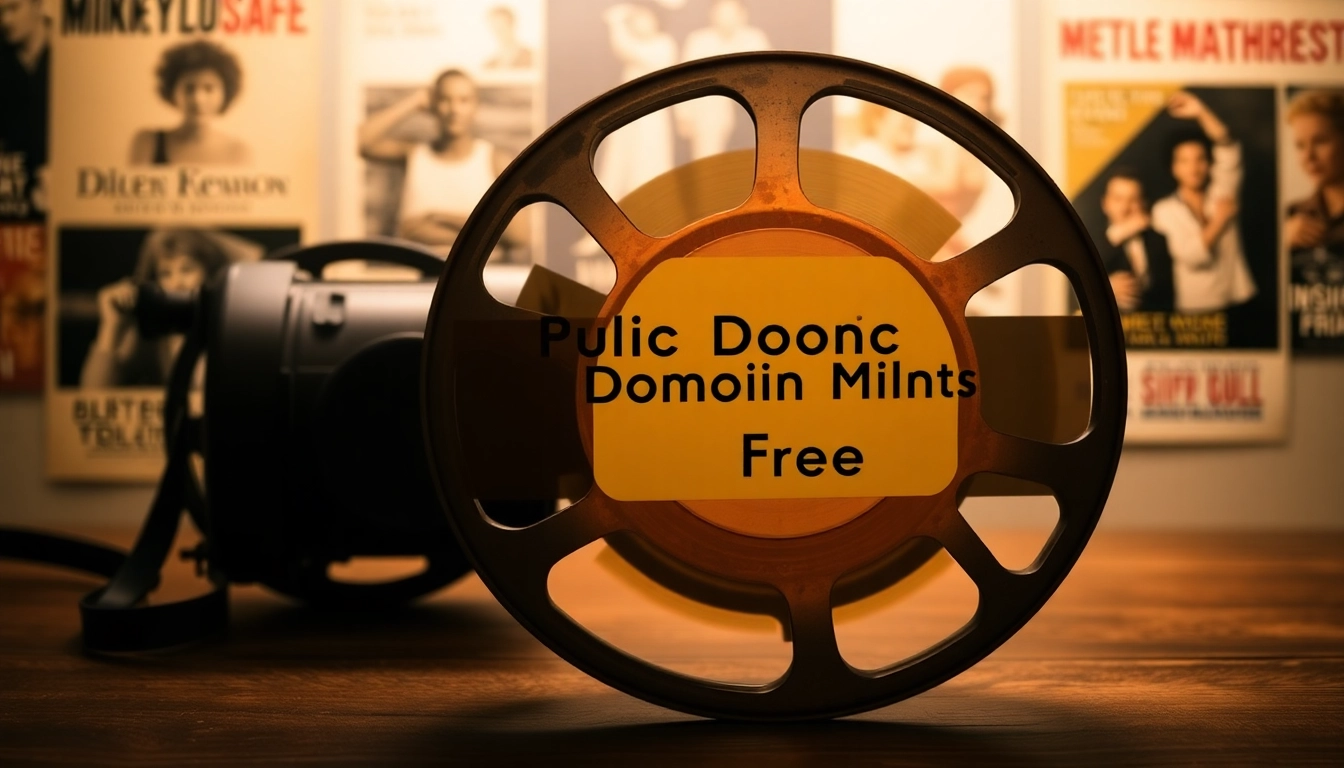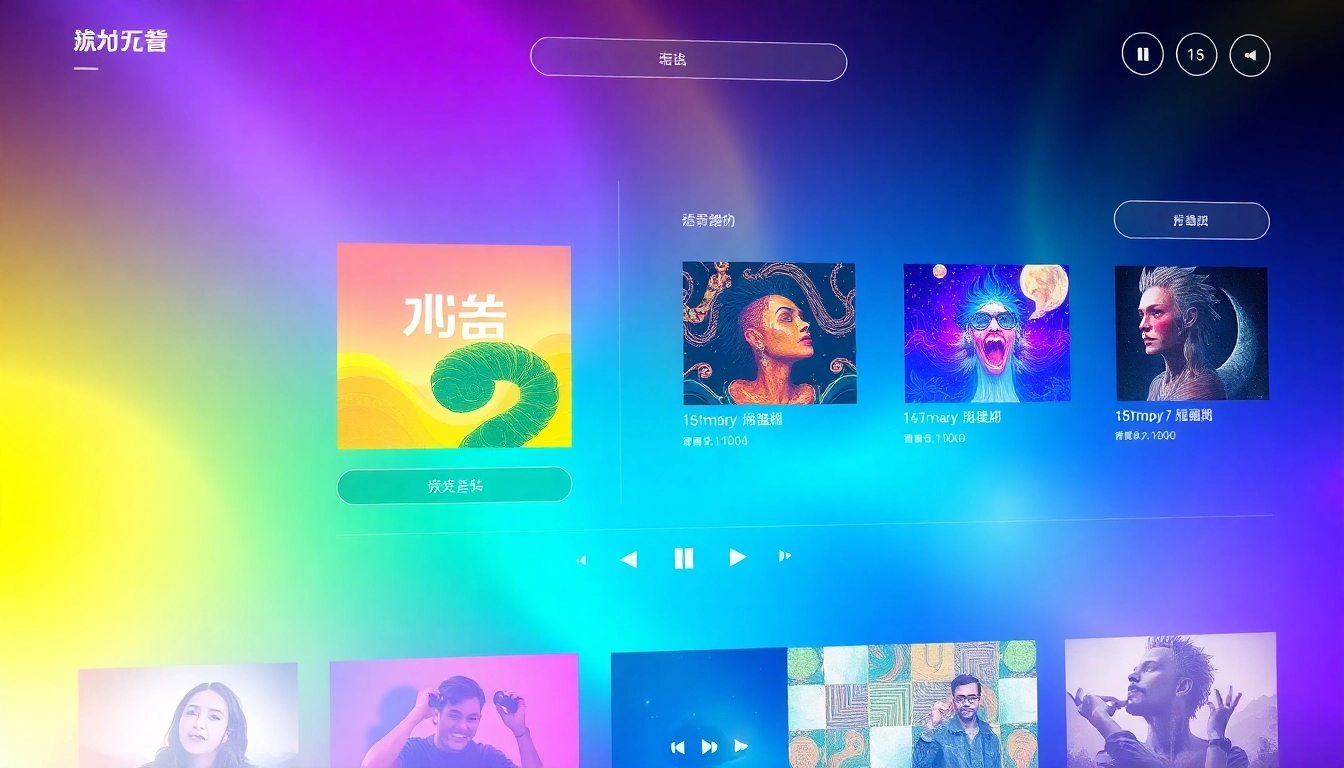Understanding Public Domain Movies
What Are Public Domain Movies?
Public domain movies are films whose intellectual property rights have expired, have been forfeited, or never had copyright protection at all. This means that anyone can use, share, and distribute these films without needing to get permission or pay royalties. Such films offer a treasure trove of cinematic history, allowing viewers to enjoy classic cinema and filmmakers to use them in their own works without legal concerns. For those interested in exploring this world of vibrant storytelling and history, there are numerous resources where you can access public domain movies free.
The History and Importance of Public Domain
The concept of public domain is rooted in the principles of copyright law, which is designed to encourage creativity by granting creators exclusive rights to their original works for a limited duration. Once that time period elapses, the work enters the public domain, becoming available for everyone to use. Historically, this has been vital for cultural preservation—the earliest films, which often have significant historical value, are now part of our shared heritage. We’re not just preserving entertainment; we’re maintaining a link to our collective past.
The importance of public domain cinema extends beyond mere nostalgia. It serves as a vital resource for educators, students, filmmakers, and researchers who seek to access and study these works without the burden of licensing costs. Moreover, public domain films often mirror cultural shifts and societal changes, allowing the examination of historical context through cinema.
Identifying Public Domain Status
Determining whether a film is in the public domain can be complex. In the United States, any film released before 1924 is automatically in the public domain. Additionally, films released between 1924 and 1963 may be public domain if they did not have a copyright notice or if copyright was not renewed. Films produced by the federal government are also generally public domain.
Online databases and resources such as the Internet Archive and the Public Domain Review provide valuable tools for identifying and accessing these films. Understanding copyright law is essential for anyone interested in utilizing public domain movies, ensuring compliance with current legislation.
Where to Find Public Domain Movies Free
Top Online Resources for Accessing Movies
Finding public domain movies is easier than ever, thanks in large part to the internet. Numerous platforms offer extensive libraries of these films, making them accessible to anyone with an internet connection. Here are some standout resources:
- Internet Archive: An exhaustive database housing countless films, documentaries, and archival footage, all in the public domain. The Internet Archive allows users to stream or download films without restrictions.
- Public Domain Torrents: This site offers a collection of public domain films available for download. It focuses mainly on feature films, ensuring that classic cinema is preserved and accessible.
- Public Domain Movie Database: A dedicated site that aggregates a wide array of movies available for free, categorized into genres to facilitate easy exploration.
Community Contributions and User-Generated Content
Many websites rely on user contributions to expand their offerings of public domain movies. Platforms like YouTube have channels dedicated to classic films, often uploaded by enthusiasts who wish to share these cultural artifacts. Users can actively engage in discussions, add insights about the films, and contribute to a growing archive of film history.
Forums and community-driven sites such as Reddit feature discussions and recommendations for finding public domain films, making it a collaborative effort to keep this content alive. This culture of sharing enriches the experience of discovering public domain cinema and encourages others to seek out and appreciate these works.
Libraries and Educational Institutions: Hidden Gems
Academic libraries and educational institutions often have public domain film collections, particularly those that focus on film studies or media history. These collections can include classic films, documentaries, and rare footage. Many libraries are digitizing their collections, making them accessible to anyone, anywhere.
Additionally, local libraries frequently host screenings of public domain films, providing opportunities for communal viewing and discussions. Engaging with your local library can uncover hidden resources and create connections to film history.
Benefits of Watching Public Domain Movies Free
Cultural Preservation Through Accessible Media
The preservation of film history through public domain movies contributes significantly to cultural heritage. By making these films widely available, we ensure that significant historical and artistic works are not lost to time. Public domain films often reflect the period’s aesthetics, social mores, and cultural narratives, serving as historical documents of the eras in which they were created.
Furthermore, by watching and sharing these films, viewers participate in the ongoing dialogue about culture and media, reinforcing the notion that these films are part of our shared human experience.
Learning and Teaching Aids for Educators
Public domain films are invaluable resources for educators, enriching the curriculum and providing real-world examples for various subjects, from history to media studies. Teachers can use these films to illustrate concepts, provoke discussion, or analyze storytelling techniques.
Moreover, educators can assign projects that involve public domain films, encouraging students to critically analyze these works or even reimagine them through modern formats, such as remakes or adaptations, reinforcing the importance of creativity and innovation within educational environments.
Enhancing Creative Projects with Free Content
Filmmakers and content creators can leverage public domain movies to enrich their own projects. For example, using clips from classic films can add depth and context to a documentary or creative work, providing a historical element without incurring any licensing fees. The downside of public domain films, of course, is that they lack the freshness of recent releases, making it important to use them thoughtfully and creatively.
Additionally, remix culture thrives on public domain content, allowing artists to create new works from existing materials. With proper attribution and creative reinterpretation, public domain films can inspire innovative projects across various media.
Popular Genres of Public Domain Movies
Classic Horror and Science Fiction Films
Classic horror and science fiction films hold a special place in the hearts of many cinema lovers. Titles such as “Night of the Living Dead” and “Nosferatu” are examples of how these genres have influenced modern filmmaking and continue to captivate audiences. The atmospheric qualities, pioneering special effects, and narrative structures found in these public domain films serve as both entertainment and a source of inspiration for contemporary creators.
Moreover, their public domain status allows filmmakers to study and analyze these works without any financial burden, gaining insights into the evolution of genre conventions and techniques.
Dramas and Romance Classics
The drama and romance genres also thrive within the public domain, featuring timeless stories that resonate with audiences across generations. Films like “The Phantom of the Opera” showcase iconic narratives that have shaped our understanding of character development and storytelling. Utilizing classic themes, these films often touch upon universal experiences of love, loss, and the human condition.
These dramas provide opportunities for analysis in various contexts, from historical perspectives to psychological interpretations, making them valuable resources for educators and students alike.
Animated Features and Cartoons
The world of animated films and cartoons is rich with public domain content, including the classic “Steamboat Willie,” which introduced the world to Mickey Mouse. Animation has evolved tremendously since its inception, and public domain animations offer invaluable insights into the techniques and narratives that paved the way for modern animation. Observing these films can enhance appreciation for the artistry and innovation that animation involves.
As with live-action films, these public domain animations can serve dual purposes—entertainment and educational—by allowing creators to inject these classics into their works, inspiring a new generation of animators and storytellers.
How to Use Public Domain Movies Free Legally
Copyright Myths and Facts
The landscape of copyright can be confusing, especially in the context of public domain works. Common myths include the belief that all older films are in the public domain or that using public domain films requires attribution. In reality, public domain status can vary based on numerous factors, including the film’s release date and copyright practices at the time. Understanding these nuances is critical for anyone wishing to engage with public domain movies legally.
Legal Guidelines for Usage and Distribution
Even with public domain films, it’s essential to follow legal guidelines when using them in projects. Creators should ensure that the films they select are indeed in the public domain, as misidentification can lead to copyright infringement. Once confirmed, these works can be adapted, reproduced, or distributed freely.
Filmmakers often use public domain movies as material for remakes, parodies, or new stories, invigorating these works with fresh perspectives while remaining compliant with the law. It’s a way to honor the original content while creating something innovative.
Best Practices for Content Creators
For content creators looking to incorporate public domain movies into their work, best practices include thorough research and documentation. A diligent approach involves verifying the film’s status and keeping records of licensing where applicable. Utilizing high-quality versions of the films can help maintain production values in the new work, and contributors should actively consider the ethical implications and contextual significance of their choices.
Creators should also engage their audiences by sharing background information about the films they use and the reasons behind choosing them, cultivating an appreciation for cinema’s rich history while drawing connections to contemporary storytelling.




